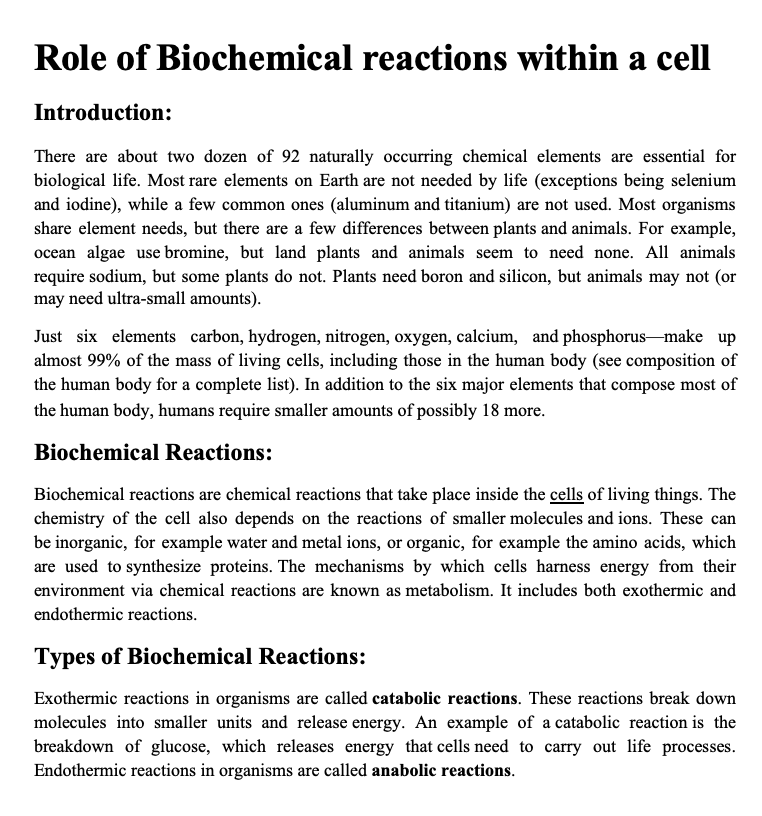Role of Biochemical Reactions Within a Cell (Grade A)
Summary:
Biochemical reactions play a crucial role within a cell, driving various processes necessary for life. The composition of living cells is primarily made up of carbon, hydrogen, nitrogen, oxygen, calcium, phosphorus, and smaller amounts of other elements. Biochemical reactions occur within cells and involve both inorganic and organic molecules, enabling the synthesis of proteins and other essential components.
These reactions can be categorized into two types: catabolic reactions and anabolic reactions. Catabolic reactions break molecules into smaller units, releasing energy cells need for various life processes. An example of a catabolic reaction is the breakdown of glucose. On the other hand, anabolic reactions build larger molecules from smaller ones. An example of an anabolic reaction is the synthesis of proteins from amino acids.
Different biochemical reactions are also based on what happens to the reactants and products. Synthesis reactions involve the production of a single product from two reactants. Decomposition reactions, in contrast, have one reactant that breaks down into two products. Single displacement reactions occur when a more reactive metal replaces another metal in an ionic compound. Double displacement reactions involve swapping anions and cations between two ionic compounds. Combustion reactions occur when a hydrocarbon reacts with oxygen, producing water, carbon dioxide, and heat.
Overall, biochemical reactions within cells are fundamental for maintaining life processes, allowing for energy production, synthesis of essential molecules, and the overall functioning of living organisms.
Excerpt:
Role of Biochemical Reactions Within a Cell
Introduction:
About two dozen of 92 naturally occurring chemical elements are essential for biological life. Most rare elements on Earth are not needed by life (except selenium and iodine), while a few common ones (aluminium and titanium) are not used. Most organisms share element needs, but there are a few differences between plants and animals. For example, ocean algae use bromine, but land plants and animals seem to need none. All animals require sodium, but some plants do not. Plants need boron and silicon, but animals may not (or may need ultra-small amounts).


Reviews